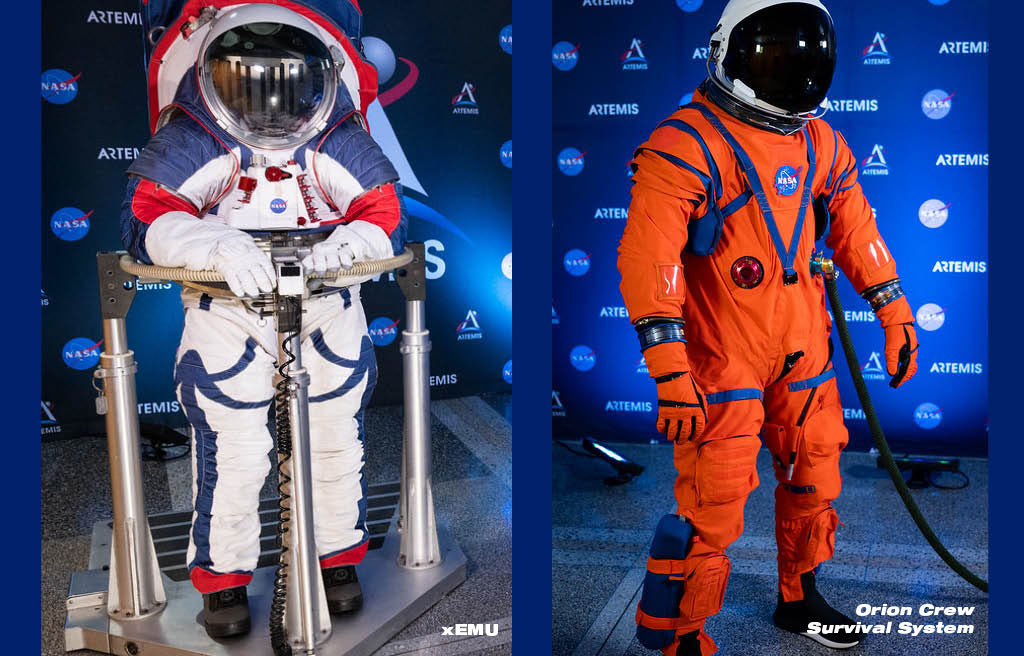NASA introduces spacesuits with enhanced safety features

Washington — NASA has unveiled two prototypes of its next-generation spacesuits.
During an Oct. 15 press conference, the space agency introduced the Exploration Extravehicular Mobility Unit, or xEMU, and the Orion Crew Survival System suit. The new spacesuits are designed to be worn during lunar missions in NASA’s Artemis program, which has the goal of sending “the first woman and the next man” to the moon by 2024.
According to NASA, the xEMU – designed for spacewalks – improves on suits previously worn during Apollo missions to the moon by protecting astronauts first against the moon’s soil, which is made up of tiny glasslike shards.
“The new suit has a suite of dust-tolerant features to prevent inhalation or contamination of the suit’s life-support system or other spacecraft,” NASA states. “The suit is also built to withstand temperature extremes of minus-250 Fahrenheit in the shade and up to 250 degrees in the sun.”
The familiar backpack device worn by astronauts, known as the Portable Life Support System, has been enhanced with miniaturized electronics and plumbing systems that allow for duplicates, reducing the concern of failures to those systems. The duplication also potentially increases the duration of spacewalks.
The xEMU’s lower torso features advanced materials and joint bearings that allow for bending and rotating at the hips. The unit also allows for increased knee bending, and the hiking-style boots feature flexible soles. The upper torso includes adjustments for more shoulder movement.
The Orion suit – designed to be worn during launches, reentries and high-risk situations – has a lighter and stronger helmet intended to reduce noise. The fire-resistant orange suit has increased strength and includes a redesigned zipper that allows astronauts to don the suit quickly in emergency situations.
The gloves are more durable and touch-screen compatible, and the boots have additional fire protection and allow for greater movement than previous versions.
Post a comment to this article
Safety+Health welcomes comments that promote respectful dialogue. Please stay on topic. Comments that contain personal attacks, profanity or abusive language – or those aggressively promoting products or services – will be removed. We reserve the right to determine which comments violate our comment policy. (Anonymous comments are welcome; merely skip the “name” field in the comment box. An email address is required but will not be included with your comment.)

